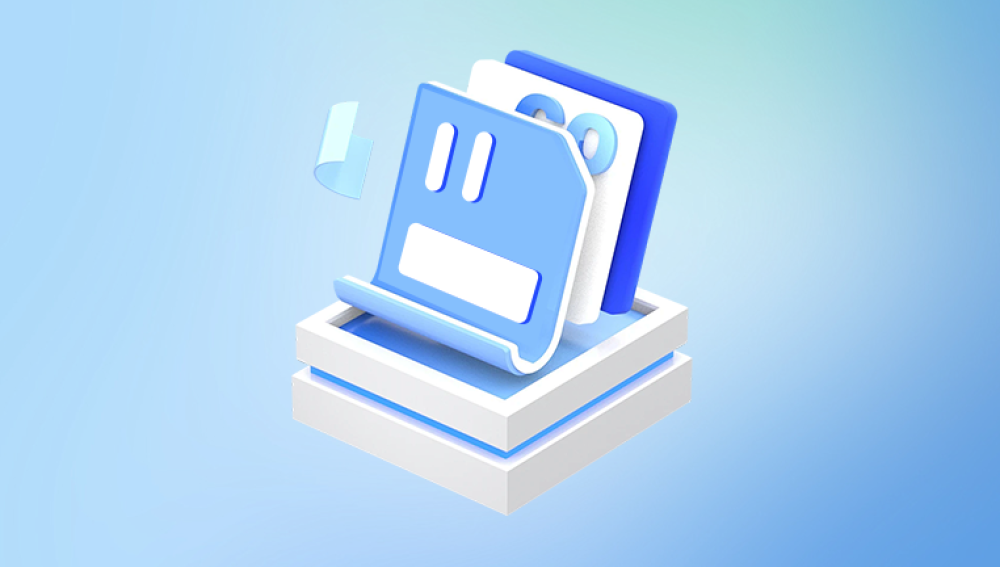SD cards are widely used in cameras, smartphones, drones, and other electronic devices. They are compact, portable, and efficient for storing files. However, like all storage devices, SD cards can fail, and one of the most alarming issues is when the card is not recognized by a computer or device. This problem can prevent access to your files, leaving photos, videos, and documents seemingly lost.
1. Problem
When an SD card is not recognized, it may not appear in File Explorer, Disk Management, or your device’s storage interface. Causes include:
Physical damage: Bent, scratched, or broken contacts.
File system corruption: Improper ejection, malware, or abrupt power loss.
Partition issues: Deleted or corrupted partitions prevent the system from detecting files.
Driver problems: Outdated or missing drivers can block access.
Unsupported formats: Devices may not read certain file systems (e.g., exFAT on older cameras).
The first step is diagnosing why the SD card is not recognized, which determines the appropriate recovery approach.

2. Initial Troubleshooting
2.1 Test on Multiple Devices
Insert the SD card into another computer or device to rule out device-specific issues.
Try different card readers or USB ports.
2.2 Check Disk Management (Windows)
Press Win + X → Disk Management.
Look for the SD card in the volume list.
If detected but unassigned, assign a drive letter.
If it shows as RAW or unallocated, file system corruption may be the issue.
2.3 Update or Reinstall Drivers
Open Device Manager → Disk Drives.
Locate the SD card, right-click, and select Update Driver or Uninstall → Reinstall.
2.4 Avoid Formatting the Card
Do not format the SD card when prompted, as this may overwrite data and reduce recovery chances.
3. Recovery Methods
3.1 Using Data Recovery Software
Specialized software can detect and recover files even when an SD card is not recognized by Windows or macOS:
3.1.1 Drecov Data Recovery
Drecov Data Recovery offers an intuitive interface for recovering files from damaged, unrecognized, or formatted SD cards:
Connect the SD card via a reliable card reader.
Launch Drecov Data Recovery and select the SD card.
Run a deep scan to locate files.
Preview and select files for recovery.
Save recovered files to a safe location on a different drive.
3.1.2 PhotoRec
Open-source recovery tool that works on multiple operating systems.
Recovers files by analyzing raw sectors.
Files may lose original names and folder structure but remain usable.
3.1.3 Recuva, EaseUS Data Recovery, and Stellar
Offer free or trial versions to recover files from SD cards that are corrupted or unrecognized.
Deep scanning features increase recovery success rates.
3.2 Recovering Partitions
If the SD card shows as RAW or unallocated:
Use TestDisk to rebuild the partition table.
Follow step-by-step prompts to restore the lost partition.
Once the partition is restored, files become accessible and can be recovered.
4. Advanced Methods
4.1 Command-Line Recovery
Use CHKDSK (Windows) to repair file system errors:
chkdsk X: /f /r
Replace X: with the SD card letter.
For RAW SD cards, chkdsk may fail. In such cases, software-based recovery is safer.
4.2 RAW Recovery
Some recovery tools allow scanning RAW sectors to extract files based on headers and metadata.
This method is effective for damaged SD cards where the file system is completely corrupted.
4.3 Professional Recovery Services
If the SD card is physically damaged (broken, water-exposed, or electronics failure), professional cleanroom recovery services may be necessary.
These services can reconstruct data from damaged memory chips.
Costs vary from $100 to $2.000+ depending on severity and storage size.
5. Preventing Future SD Card Recognition Issues
Eject Properly: Always use “Safely Remove Hardware” before removing the SD card.
Avoid Interruptions: Don’t remove the card during data transfer or device use.
Use Reliable Card Readers: Cheap or unstable readers may cause corruption.
Keep Backups: Regularly back up important files to cloud or external drives.
Monitor Card Health: Use tools to check for bad sectors or wear.
Format Safely: When formatting, use device-specific settings or SD Association Formatter.
6. Case Studies
Unrecognized SD Card in Camera: Drecov Data Recovery restored all JPEG and RAW images after a deep scan.
Corrupted SD Card Showing RAW: TestDisk rebuilt the partition, and files were recovered.
Physically Damaged Card: Professional cleanroom recovery salvaged 90% of data from a water-exposed microSD card.
7. Tips for Successful Recovery
Act Quickly: The longer the card is unused or overwritten, the lower the recovery success.
Use Quality Software: Free tools may work for simple cases, but professional software improves success rates.
Recover to a Different Drive: Never recover files back to the same SD card.
Multiple Scans: Deep scans may be required for severely corrupted or unrecognized cards.
8. Frequently Asked Questions
Q1: My SD card is not recognized at all—can I still recover files?
Yes, specialized recovery software or professional services can often recover files even if the card is not recognized by Windows or macOS.
Q2: Should I format the card if prompted?
No. Formatting can overwrite recoverable data and reduce recovery chances.
Q3: Are free tools effective?
Tools like PhotoRec, Recuva, and Drecov Data Recovery’s free version can often recover files, though advanced cases may require paid solutions.
Q4: Can I recover files from a physically damaged card at home?
Not reliably. Physical damage usually requires professional cleanroom recovery.




